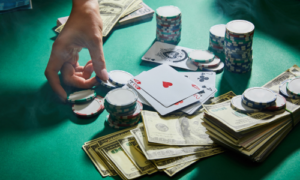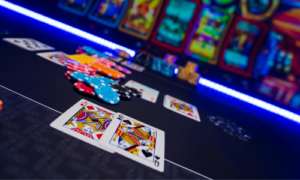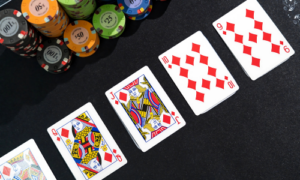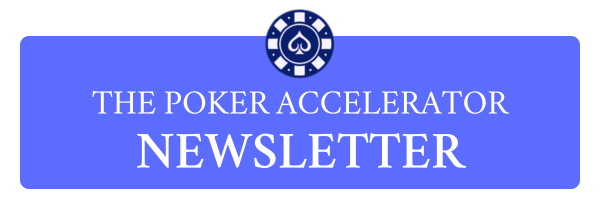
Hi friends, thanks for checking in again. This week, I’ve put together a few strategy tips you can apply to your game, some updates from the poker world, and a look at what’s been going on in my own schedule lately. Whether you’re here to learn, stay sharp, or just keep up with the game, I appreciate you being part of this community. Let’s dive in.
This Week’s Insights
- What’s New in Poker?
- Poker Tips of the Week
- Interesting Hands
- Health and Nutrition
- Lexy’s Latest
What’s New in Poker?

Step Up Your Game with The Poker Accelerator!
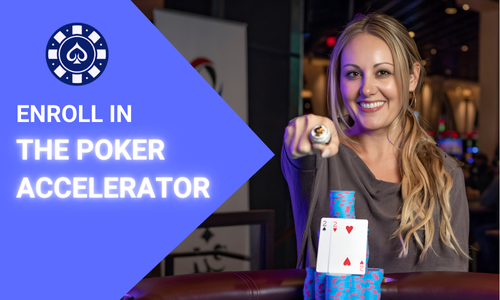
Poker Tips for the Week

Should You Go Pro? Here’s What to Really Consider
I wrote in my book about making Poker your career. Are you dreaming about ditching the 9-to-5 for a life at the Poker tables? You’re not alone—but before you make the leap, let’s talk real talk.
Going pro in Poker isn’t just about how well you play. It’s about whether you’re ready to fully commit to a lifestyle that’s unpredictable, competitive, and often financially volatile. If full-time play isn’t realistic right now, becoming a semi-pro might be the smarter move. Keep your day job, find flexible hours, and build your bankroll on the side—without the stress of relying on Poker to pay your rent. Less pressure, less risk.
For bankroll management, I LOVE using my Edgeboost card! A debit card that separates my Poker money and personal money!
Think about your current job, too. Is the steady income worth more than chasing a dream? Remember, Poker comes with swings—real financial highs and lows. A regular job doesn’t. That difference alone can be huge.
And don’t forget about real-life expenses. Poker income can look good on paper, but travel, hotels, meals, and other costs can chip away at it fast. If you’re constantly dipping into your bankroll to cover basic expenses, you’re setting yourself up for stress—and possibly burnout.
Ask yourself: Do I have enough of a bankroll to handle the swings of pro-level play? Can I weather the variance and cover increased costs without panicking? If your experience level is still in the early stages, it might be best to keep learning and grinding part-time before taking the leap.
Lastly, think about your personal life. If you’ve got a family or other serious responsibilities, the pressure to perform as a pro can get heavy, fast. Make sure your decision is grounded, not just based on passion but on a long-term track record of results.
In the end, going pro is about more than talent—it’s about lifestyle, finances, and mindset. Take the time to really weigh your options. There’s no rush. The game isn’t going anywhere.
For more tips to dominate the tables, sign up for FREE 3 FULL DAYS of PokerCoaching Premium! Click on the link below to sign up now!
Interesting Hands

So in my latest Venetian vlog, I pick up 7♣6♣ under the gun +2 during the 300/500 level, and I raise it up to 1,200. I love these suited connectors in early position at the right tables—they’re great for building disguised hands and adding balance to your opening range. The small blind calls, and my friend Dustin in the big blind, who’s super solid, comes along too.
So we’re going three ways to the flop with 7♣6♣.
Flop: K♦ 4♣ 8♣
Ohhh yes. This is a beauty—we’ve got a flush draw AND a gutshot to the 5. So I’ve got nine outs to the flush, plus three clean outs to the straight (we’re removing one club because it’s already counted). That’s 12 clean outs minimum, plus fold equity if we play it aggressively.
I c-bet, which I’m always doing here. I’m the preflop aggressor, this board doesn’t scream “hit everyone,” and I have all the strong Kx in my range. I fire, and the small blind calls.
Then it gets spicy. Dustin in the big blind—again, a very competent player—check-raises to 8K.
Now I go into the tank for a second, but not for long. I’m not folding this combo. Not with this much equity and the ability to apply maximum pressure. This is a classic semi-bluff shove spot—fold equity + big draw = jam.
So I rip it in, and both players fold! We take it down with seven-high!
This is a perfect example of a spot where you want to lean into fold equity when you hold both a draw and positional leverage. Especially in re-entry stages—get aggressive with strong semi-bluffs and make crush your opponents.

According to GGPoker, integrating meditation and mindfulness into your Poker routine can significantly enhance emotional stability, improve focus, and help mitigate tilt. Poker is not merely a game of cards but a mental marathon; a sharp, calm mind can make the difference between a call and a fold, between victory and defeat.
Meditation helps you attain this calmness, while mindfulness allows you to maintain it throughout your gameplay. By practicing mindfulness, you become fully present and engaged in the moment, observing without judgment and accepting the flow of events—be it a favorable turn card or an ill-timed bluff by an opponent.
This heightened awareness can lead to better decision-making, improved focus, and enhanced emotional stability. Moreover, mindfulness can serve as an antidote to tilt by helping you recognize the early signs of emotional imbalance and take proactive measures to prevent it.
Key Takeaways:
Enhanced Emotional Stability: Regular meditation and mindfulness practices can help you remain calm and composed, even during high-pressure situations.
Improved Focus: Mindfulness sharpens your attention, allowing you to notice subtle cues and make more informed decisions.
Tilt Mitigation: Being aware of your mental state enables you to recognize and address the onset of tilt before it affects your gameplay.
Lexy’s Latest

This was one of the more exciting weeks of my life as my stepdaughter had her first baby and I became a Step Nana! What an amazing experience it was to hold my new grandchild for the first time!
Thank you for reading and see you at the tables!
Lexy Gavin-Mather






